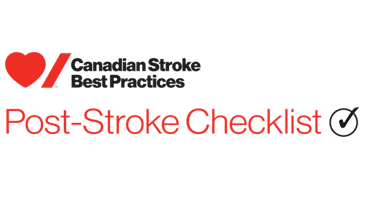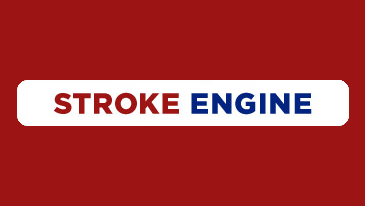Notes
- When someone experiences vascular cognitive impairment, their family and informal caregivers play a pivotal role, and are also personally affected along this journey. Understanding the caregivers’ circumstances, abilities, and concerns are important when providing comprehensive person- and family-centred care.
- Support for families and caregivers may address the following domains: education, training, counselling, development of a support structure, and financial assistance (based on AHA stroke rehabilitation and recovery guideline, (Winstein et al. 2016).
- Consent: Refer to Introduction regarding issues related to consent when providing support to an individual with VCI.
- For more in-depth recommendations and information, refer to the Rehabilitation, Recovery and Community Participation following Stroke module.
Recommendations and/or Clinical Considerations
4.1 Education Related to VCI
- Clinicians should assess individuals with VCI, family and caregiver’s needs for information, education and training relevant to the impact of VCI on the individual and caregiver, to support the cognition and everyday function of the individual with VCI [Strong recommendation; Moderate quality of evidence].
- An individualized education plan should be developed and implemented based on the assessment of learning needs and goals of individuals with VCI and their families and caregivers, and be culturally sensitive and appropriate to literacy levels [Strong recommendation; Moderate quality of evidence].
- Education should address knowledge of VCI and its potential progression over time, practical skills, safety considerations, personal coping, and problem-solving strategies to manage ongoing challenges [Strong recommendation; Moderate quality of evidence].
- Caregivers should be provided personalized training for caregiving skills in the context of specific cognitive difficulties and severity, behaviors, and psychological symptoms of VCI [Strong recommendation; High quality of evidence].
- Educational needs change over time and as the VCI progresses; assessments, education, discussions and training should occur on an ongoing basis and be provided in writing as well as verbally [Strong recommendation; Moderate quality of evidence].
4.2 Support for Family and Caregivers
- The extent, quality and capacity of support provided by family and caregivers of an individual with VCI should be assessed to ensure sustainability [Conditional recommendation; Moderate quality of evidence].
- Areas to consider include levels of individual coping of family/caregivers, risk for mental health issues, social context, culture, and societal structures, and other physical and psychosocial issues (e.g. financial, environmental, abuse, housing etc.) that may impact their caregiving responsibilities [Conditional recommendation, Moderate quality of evidence].
Note: Where concerns are identified, encourage family members to reach out to primary care, mental health agencies, social workers or community support agencies as appropriate.
- Areas to consider include levels of individual coping of family/caregivers, risk for mental health issues, social context, culture, and societal structures, and other physical and psychosocial issues (e.g. financial, environmental, abuse, housing etc.) that may impact their caregiving responsibilities [Conditional recommendation, Moderate quality of evidence].
- Appropriate resources and sources of support that address family and caregiver needs should be shared over the trajectory of VCI and across the care continuum [Strong recommendation; Moderate quality of evidence].
Section 4 Clinical Considerations
- It is important to understand the support network and cultural contexts (e.g., caregivers, family, friends) for the individual with VCI and their caregivers to help personalize treatment.
- Consider services that can enhance, or supplement care provided by family and caregivers – e.g., respite care, day programming, community services. Referrals may be required to access some of these and/or extra resources.
- Healthcare providers and community services should consider and address stigma and how the individual with VCI and their caregivers view the condition and options for care, based on their knowledge, experience and cultural beliefs, to encourage health-seeking behaviours and uptake of care and services. (Scottish Intercollegiate Guidelines Network 2023)
- Education should include the progressive nature of VCI and encourage individuals with VCI to consider making plans for their personal, health and financial affairs.
- The format of any information shared should be tailored to the needs and preferences of the individual with VCI and their family and caregivers. Consider literacy and language, additional support needs and cultural sensitivity. (Scottish Intercollegiate Guidelines Network 2023)
- Education regarding caregiving skills is best provided when developing a care plan (if applicable), at transitions in care, or in the context of new or worsening barriers to care, or changes in clinical status that require changes in caregiving strategies.
- All care settings should have up-to-date inventories of community resources available to support self-management and offer guidance and assistance in obtaining needed services.
Individuals living with VCI are often cared for by informal caregivers, such as a spouse, sibling, or an adult child. Informal caregivers often report being stressed and anxious, feelings restricted and having poorer quality of life. Education is an ongoing and vital part of the recovery and forward planning process for individuals with VCI, family members and caregivers. Increased screening, assessment and surveillance of individual with VCI, family and caregiver needs and coping will provide a holistic person- and family-centered approach to care and optimally lead to better outcomes and adaptation.
People with lived experience highlighted that education and support needs can change over time. They emphasized that education and support for VCI should be tailored to the needs of the individual with VCI, their family and caregivers. Support for daily activities and vocational roles was also highly valued by PWLE, as well as peer support. They also emphasized the importance of resources and support for caregivers. This also includes education to caregivers on VCI, its potential impact on daily life, activities, mood and behavior, as well as VCI management. Education to caregivers may also reduce the burden of explaining for the individual with VCI and help them feel heard and understood.
To ensure people experiencing VCI receive timely assessments, interventions and management, interdisciplinary teams need to have the infrastructure and resources required. These may include the following components established at a systems level.
- Protocols to involve individuals with VCI and families in healthcare team transition planning meetings and collaborative decision-making regarding goal setting at all transition points.
- Resources and mechanisms to plan and deliver community-based services which consider the needs of the individuals with VCI and family/caregiver (e.g., home care services, psychological support).
- Models of care that include technology such as telemedicine, regular telephone follow-up and web-based support.
- Appropriately resourced hospitals, rehabilitation facilities, home care services, long-term care and other community facilities that care for individuals with VCI, with identified contact people and case managers/system navigators to coordinate and manage care transitions for individuals with VCI, that include addressing related conditions such as stroke.
- Ongoing education and training of healthcare professionals on person- and family-centred stroke care in all settings that care for individuals with VCI.
- Opportunities for education and training for individuals with VCI, families and caregivers to provide peer support when requested.
- Access to educational resources that are culturally, ethnically, and linguistically appropriate.
- Access to self-management support services through telemedicine technologies, especially in rural areas and where there are local resource gaps.
- Coordinated efforts among stakeholders such as the Heart and Stroke Foundation, public health agencies, provincial ministries of health, non-government organizations (NGOs), hospitals and clinics, and individual care providers across the continuum of care to produce education materials with consistent information.
- Community resources, such as support groups and respite care, to provide ongoing support and education across the VCI trajectory.
System indicators:
- Number of community-based services (such as rehabilitation programs, geriatric day programs, homecare services, respite care) available for individuals with VCI and their families.
Process indicators:
- Proportion of individuals with VCI with documentation of education provided at each stage of care.
- Total number of encounters focused on education for each individual with VCI, and the time spent on education during a healthcare encounter.
Patient-oriented outcome and experience indicators:
- Percentage of individuals with VCI and their families who reported feeling adequately prepared for self-care and self-efficacy.
- Self-reported quality of life following diagnosis of VCI using a validated measurement tool, measured longitudinally.
- Functional outcome scores following diagnosis of VCI, measured longitudinally.
Measurement Notes
- Quantity and method of education are very important elements of these recommendations. Measurement of education for individuals with stroke and families should be expanded when feasible to capture these aspects, although this is challenging to accomplish.
- Where possible, standardized mechanisms for testing individuals with VCI, family and caregiver knowledge pre- and post-education should be included in the education sessions.
- Data sources include all documents, charts, and records related to care across the healthcare system (primary care, acute care, follow-up clinics, inpatient and outpatient rehabilitation programs, community programs and services) and may be obtained through primary chart audit or review, and various logging and audit practices of individual groups.
- Documentation quality (generally weak) by healthcare professionals involved in the individuals care may affect ability to monitor this indicator reliably.
Resources and tools listed below that are external to Heart & Stroke and the Canadian Stroke Best Practice Recommendations may be useful resources for stroke care. However, their inclusion is not an actual or implied endorsement by the Canadian Stroke Best Practices team or Heart & Stroke. The reader is encouraged to review these resources and tools critically and implement them into practice at their discretion.
Health Care Provider Information
- Canadian Stroke Best Practice Recommendations Vascular Cognitive Impairment Module Appendix Five: Lived Experience of Vascular Cognitive Impairment Journey Map
- Canadian Stroke Best Practice Recommendations Rehabilitation, Recovery and Community Participation following Stroke Module
- Heart & Stroke: Taking Action for Optimal Community and Long-Term Stroke Care (TACLS) A Resource for Healthcare Providers
- Vascular Harmonization Guidelines
- Evidence-based Review of Post-Stroke Cognitive Disorders (EBRSR)
- Evidence-based Review of Post-Stroke Depression and Mood Disorders
- AHA/ASA Scientific Statement on Vascular Contributions to Cognitive Impairment and Dementia
- NHS Psychological care after stroke
- Stroke Engine, Cognition section
Information for People with VCI, their Families and Caregivers
- Heart & Stroke: Vascular Cognitive Impairment Infographic and Journey Map
- Heart & Stroke: Your Stroke Journey
- Heart & Stroke: Post-Stroke Checklist
- Heart & Stroke: Virtual Healthcare Checklist
- Heart & Stroke: Secondary Prevention Infographic
- Heart & Stroke: Rehabilitation and Recovery Infographic
- Heart & Stroke: Transitions and Community Participation Infographic
- Heart & Stroke: Vascular Cognitive Impairment
- Heart & Stroke: Stroke Recovery and Support
- Heart & Stroke: Services and Resources
- Heart & Stroke: Depression, Energy, Thinking and Perception
- Heart & Stroke: Online and Peer Support
- Heart & Stroke: Support for family care partners
- Heart & Stroke: Recognizing and Handling Stress
- Government of Canada: Dementia Awareness Resource Toolkit
- Stroke Engine
- Enhancing Care Program for Ontario Care Partners
Evidence table and reference list
Support for Individuals with VCI, their Families and Caregivers
Education and training are essential components to enhance engagement in caregivers of individuals with VCI or vascular dementia. A systematic review of 48 RCTs including informal caregivers for individuals with VCI examined interventions which were focused on improving the carer’s mental health. Interventions included psychoeducation, leisure and physical activity, counselling, cognitive behavioural approaches and befriending and peer-support (Wiegelmann et al. 2021). The results were mixed. Of 26 interventions that assessed the subjective burden of the caregiver, there were significant improvements in the intervention group in 12 trials (46.2%). Among 24 interventions that assessed caregiver depression, there were improvements in 9 trials (37.5%) associated with the intervention. In a minority of studies (5 trials, 21.7%), caregiver quality of life was improved in the intervention group. Problem-solving based interventions reduced depression and anxiety levels, as well as caregiver burden, among caregivers of elderly individuals with a variety of chronic conditions (Tao and Zhang 2019). Among 34 RCTs included in a systematic review of informal carers of individuals with VCI who were living in the community, interventions designed to reduce burden/stress trials were found to have a small, but significant effect (SMD=-0.18, 95% CI -0.30 to -0.05). Interventions examined included multicomponent interventions, skills training or education, support and counseling and physical activity (Williams et al. 2019). A Cochrane review (Liu et al. 2018) included 5 RCTs involving 201 unpaid carers of individuals with any type of VCI examining mindfulness-based stress reduction (MBSR) techniques such as yoga and meditation. At the end of treatment, carer depressive symptoms and anxiety were significantly lower in the MBSR group compared with the active control group (SMD=-0.63, 95% CI -0.98 to -0.28, and MD= -7.5, 95% CI -13.11 to -1.89, respectively), although the certainty of the results were low, assessed using the GRADE system.
Sex, gender and other equity-related considerations
Unpaid caregiver burden disproportionately affects women and may be associated with negative health consequences. The increased stress of caregiving may also represent a potential risk factor for cognitive decline and dementia in female caregivers (Volgman et al. 2019). Pillemer et al. (2019) examined the baseline measures of 211 community-residing caregivers of people with dementia, reporting some degree of distress at baseline who were participants of a longitudinal study.There were significant gender differences, whereby women experienced a greater level of overall burden, assessed using the Zarit Burden Interview, and reported higher levels of depression, compared with men. A recent scoping review (Arbel et al. 2019) including the results of 61 studies sought to synthesize the literature related to sex and gender differences among dementia spousal caregivers. The areas with the greatest evidence base relating to sex differences were depression, burden, objective physical health, and informal supports. Research gaps that were identified were related to quality and type of literature (e.g, a lack of qualitative, longitudinal studies) and the use of secondary analyses to investigate sex and gender differences.





